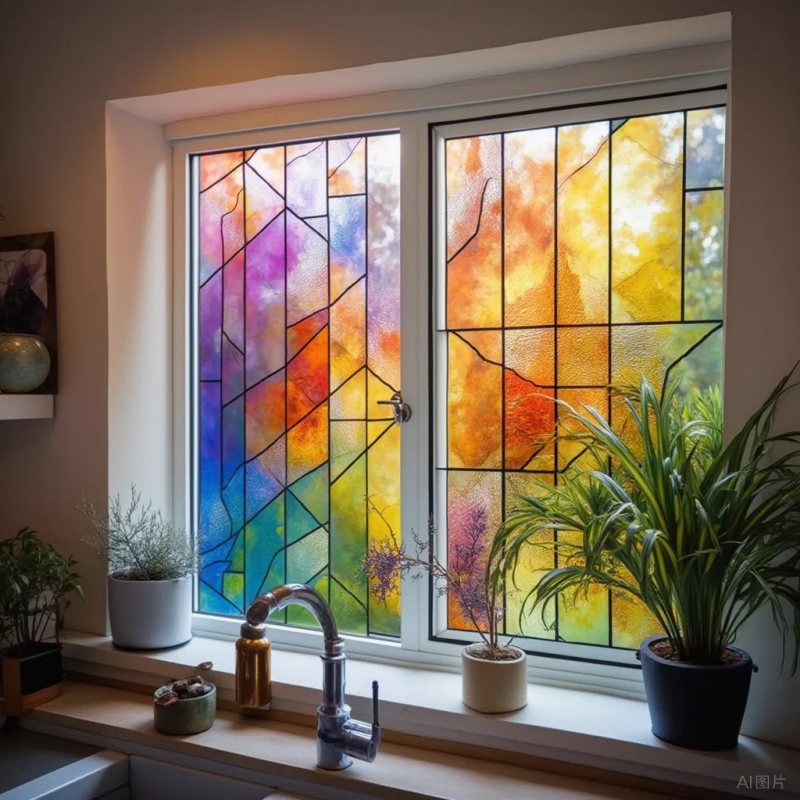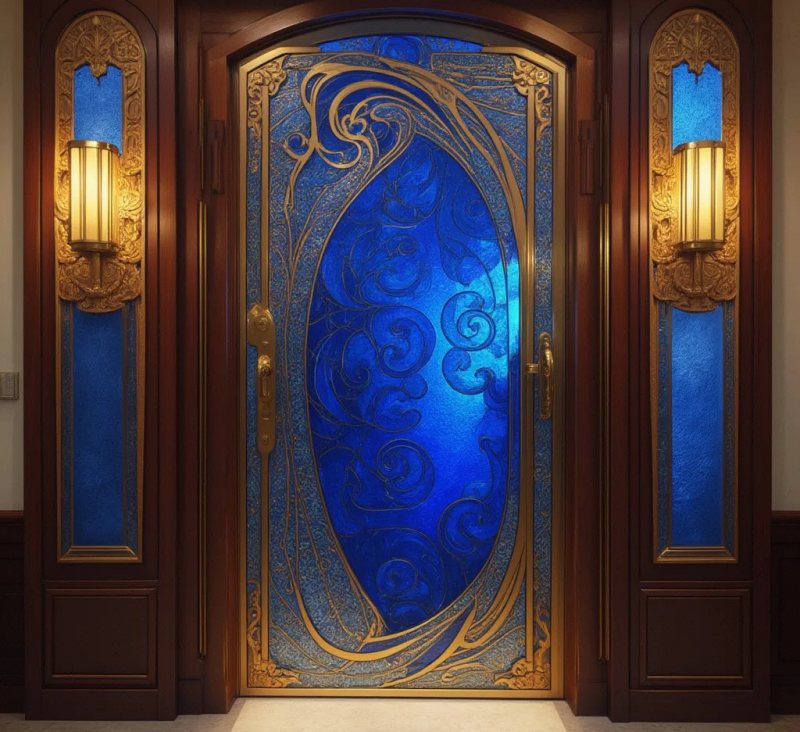

In the world of decorative design, the choice of materials is like paint in the hands of painters, and different materials can outline completely different spatial artistic conceptions. Glass materials are undoubtedly one of the most flexible and expressive "pigments". Today, let's explore how glass materials can more easily express creativity in design and land perfectly from a designer's perspective.
Glass is a transparent or translucent material, and its transparency gives the space a sense of lightness and transparency. Designers can start with this characteristic of glass and apply it to the separation of spaces. For example, a partition between the open kitchen and the dining room with a piece of glass with a fine pattern not only ensures the visual coherence of the space, but also cleverly divides the functional areas. This design is inspired by the pursuit of spatial fluidity, and the transparency of glass seems to pave an invisible passage for the space, allowing light and sight to travel freely.

Glass is also highly malleable. It can be blown into various shapes, or it can be cut and carved to present different textures and patterns. Designers can take advantage of this to create unique decorative works of art. For example, on the ceiling of a hotel lobby, a set of chandeliers blown from stained glass are hung, each of which is carefully designed and combined like a flowing picture of color, adding a luxurious and dreamy atmosphere to the lobby. This design inspiration often comes from the reinterpretation of traditional materials, transforming glass from ordinary building materials into artistic decorative elements.
In order for glass materials to better express design intentions in design, designers need to master some expression skills. First of all, the use of color is crucial. The glass itself can be colorless and transparent, or various colors can be added. In terms of color matching, you can choose according to the overall style of the space. If it is a modern and minimalist style space, you can choose transparent or light-colored glass to highlight the simplicity of the space; If you have a vintage-style space, you can use dark or stained glass with vintage patterns to create a classic feel. For example, in a European vintage-style bedroom, the wardrobe door is made of dark brown carved glass, which echoes the wooden furniture and warm wallpaper of the room, showing a strong classical style.

Secondly, the creation of light and shadow effects is also the key to the expression of glass materials. Glass can refract and reflect light well, and designers can create unique light and shadow effects by controlling the thickness, shape, and position of the glass. For example, if several glass panels of different thicknesses are installed on one wall, when the light shines on them, they will form different shades of shadows on the wall, adding layering and three-dimensionality to the wall. This use of light and shadow effects can make the space more vivid and interesting, as if it has its own life.
Although glass materials have many advantages in design expression, some practical issues also need to be considered in the actual implementation process. The first is security. Glass is a fragile material, especially in public spaces or in home settings with young children, and requires special attention. Designers can choose glass materials with higher safety performance, such as tempered glass or laminated glass, to prevent potential safety hazards caused by glass breakage. For example, on the windows of school classrooms, the use of tempered glass can effectively prevent students from accidentally breaking the glass during activities and getting injured.
The second is the installation process. The installation of glass requires professional technology and equipment to ensure its firmness and stability. When installing large areas of glass curtain walls or complex glass decorations, it is necessary to cooperate with a professional construction team and carry out construction in strict accordance with the design requirements. For example, during the installation process of glass atriums in shopping malls, construction personnel need to use professional lifting equipment to ensure that each piece of glass can be accurately installed in place and securely connected, so as to ensure the safety and aesthetics of glass materials during use.
Finally, cleaning and maintenance. The glass surface is prone to dust and stains, affecting its transparency and aesthetics. When designing, the cleaning and maintenance of the glass should be taken into account. For example, in some hard-to-clean corners, some detachable glass parts can be designed to facilitate cleaning by cleaning personnel. At the same time, you can also choose some glass materials with self-cleaning functions to reduce the cleaning workload.

Name: Litong Glass
Mobile:+86 16632961602
Tel:+86 16632961602
Email:vip@litongglass.com
Add:Shahe city,Hebei,China